Without a doubt, the 52nd New York film festival largely fulfills its mission (as stated on its website) to “introduce audiences to the most exciting, innovative and accomplished works of world cinema.” This holds true thanks to an impressive collection of films in its lineup, many of which caught programmers’ attention at Cannes and added a touch of class to the recent Toronto International Film Festival. A filmgoer would do well to seek out all or some of the following recommendations.
The returning brothers Jean-Pierre and Luc Dardenne put star Marion Cotillard through her paces in Two Days, One Night, possibly their most moving film yet, and a festival favorite son, director/writer Olivier Assayas, comes back with Clouds of Sils Maria, which features a traffic-stopping trio: Juliette Binoche, Kristen Stewart, and Chloë Grace Moretz. Two offerings bend the rules of the biopic, giving that genre a kick: the sprawling, incisive, and mysterious Mr. Turner, writer/director Mike Leigh’s Dickensian take on the world of painter J. M. W Turner; and Bertrand Bonello’s feverish Saint Laurent. Sensational, sad, and sensual, this movie is less about French designer Yves Saint Laurent’s life than a depiction of his state of mind. With its rich depth of field, it’s one of the few films anywhere actually shot on 35 mm.
First seen at the Berlin Film Festival, Yann Demange’s ’71 thrusts viewers into the Troubles of Northern Ireland, following an areligious rookie British soldier stranded and wounded in West Belfast. In the Catholic section, he’s seen as the enemy enforcer of British rule, but around another corner, he’s assumed to be a protector of union loyalists. Heavy on plot, it captures the complicated conflicts on all sides and provides a multifaceted look at the conflict through a richocheting chain of events that don’t let up. Actor Jack O’Connell, a live wire in last year’s Starred Up and the central figure in Angelina Jolie’s upcoming Unbroken, leads the large ensemble.
Jean-Luc Godard, whose Band of Outsiders and A Woman Is a Woman screened at the very second NYFF (1964), is back with Goodbye to Language. You don’t have to wait for the next Avatar to be wowed by 3-D effects; they’re here in this 70-minute dense, voiceover essay, starring Godard’s dog, Roxy. The last film of another veteran of the French New Wave, the late Alain Resnais’s Life of Riley, will have its North American premiere. Resnais was also among the first filmmakers championed when the festival began in 1963, with his ahead-of-its-time Muriel, one of the best examples of the art and craft of editing. His digitally restored landmark from 1959, Hiroshima Mon Amour, will have an anniversary screening and then tour the country beginning October.
One should-see is the homegrown Whiplash, whose title effectively describes the contretemps between an ambitious music student and his drill sergeant–type instructor. In this taut game of cat-and-mouse, the rehearsal room becomes a battlefield. As a character-driven thriller, it’s even more riveting than the highly promoted opening night film Gone Girl.
As an antidote to Whiplash‘s traumatizing teacher, the festival also offers Ethan Hawke’s documentary Seymour: An Introduction, a lovely tribute to Seymour Bernstein, a rising piano recitalist of the 1960s who gave up his career at the height of critical acclaim to nurture and inspire students. (New York Times architecture critic Michael Kimmelman is one of his former protégés.) It’s the portrait of an artist as thoughtful, patient, and forthcoming.
NYFF also presents one of the most important films of the year, the atmospheric documentary The Look of Silence, the companion piece to director Joshua Oppenheimer’s Oscar-nominated and very meta The Act of Killing. The latter startlingly shone a spotlight on former members of the Indonesian militia, reenacting their slaughter of suspected communists in the late 1960s during the military dictatorship, which resulted in a death toll of more than a million.
The new film is more straightforward, following a 44-year-old optician, Adi Rukun (born two years after his adult brother Rami was hacked to death). He quietly but firmly confronts aging professed participants in the genocide (presumably they agreed to the sit-down in exchange for eye examinations).
The mood of these interviews are so calm that viewers will doubt that they have actually witnessed admissions to genocide, especially when the interviewees deliver their confessions accompanied by the twinkle of an eye and a winning smile. It’s the seeming normality that imbues the film with its power. Fortunately for those who do not live in the Big Apple, all of the previously mentioned films will be released in the United States, some even before the new year.
Another strong and unsettling documentary is set firmly in the United States: South-Central Los Angeles, Tales of Grim Sleeper. British filmmaker Nick Broomfield hits the streets with his crew in the predominantly African-American neighborhood of the accused Grim Sleeper, Lonnie Franklin, charged in the murders of 10 women, the first occurring in 1985. (It’s estimated that dozens more were killed.)
As Broomfield investigates, it becomes clear how disturbingly transparent Franklin was about his activities; he was open about his habit of picking up women for sex and photographing them in his van, even sharing the cell-phone images with his friends. Now one buddy recalls that he might have helped clean blood out of the carpeting in Franklin’s van. Initially, Franklin’s—male—friends try to intimidate the crew off their street; Broomfield has an easier time with the women of the block.
The film examines an economically depressed area that’s worlds away from downtown L.A. or Santa Monica and where fewer than 50 percent of the population graduates from high school. Many of the victims were allegedly drug addicts and prostitutes, and Pam, a former streetwalker who is now clean, becomes an indispensable and gregarious guide to the team, riding shotgun with them and introducing the filmmakers as “my friends from England” to women working the streets, before asking if they ever had an encounter with Franklin.
This crusading expose will both elucidate and enrage in its attempt to uncover how a killer could roam so long under the radar. One answer: police indifference. Since the 1980s, the organization Black Coalition Fighting Back Serial Murders was raising the alarm that there was a killer targeting African-American women, all found dead in the same vicinity. It sought heightened police action—a task force and warnings to the targeted population. In a too-good-to-be-true clip from a news conference, the organization’s spokesperson, Margaret Prescod, has her say in front of embarrassed Mayor Antonio Villaraigosa.
Much closer to home and in fiction mode, two New York–based filmmakers venture out on the cold city streets. Brothers Josh and Bennie Safdie’s Heaven Knows What is based on the Arielle Holmes’s memoir, Mad Love in New York City. The author additionally stars as Harley, a homeless heroin addict in her early 20s making hazardous choices. When challenged by her boyfriend—”If you loved me, you would have killed yourself by now”—she cuts a vein. From the moment Holmes appears on screen, there’s no question of authenticity, and given the subject matter and a strong, first-time cast, it shouldn’t be a surprise that the film’s shot with a jittery handheld camera. The tone’s not all grungy, though: an early ’80s-inspired synthesizer score propels much of the film.
On the other hand, Oren Moverman’s Time Out of Mind challenges audiences to accept Richard Gere as a homeless man who has been living off the grid for nearly a decade. The film opens with Charles Hamlin (Gere) sleeping in a bathtub in an abandoned Brooklyn apartment, upon which he’s thrown out by the none-too-happy landlord. Out on the streets, Charles has no recourse, belongings, or place to stay.
Through bits of information doled out here and there, the audience attempts to piece together the alcoholic, addled man’s history. Part of the mystery comes from Charles not being all that streetwise, though he has been homeless for years. He drinks and urinates in public, so he doesn’t quite live in the shadows, yet he’s not savvy enough to procure a spot in a city-run shelter. In contrast, Kyra Sedgwick roams the streets, also against type, as an extrovert with a stuffed shopping cart and in weathered make-up. Her destitute character’s something of a chatterbox; the audience gets a read on her soon enough.
Can the well-known Gere subsume his star power in an atypical role? Not right away—for one thing, there’s his mellifluous voice and fashionable, close-cropped haircut. However by the second hour, viewers will be well into Charles’s world, even when Gere, rocking a scarf as in Arbitrage, briefly takes them out of it. Whether through Charles’s circumstances or the actor’s sheer conviction, Gere wins you over. Time also features a tone typically found in European films: the loose, improvised interactions, in situ filming, and the long takes, where observation takes precedence over easy answers. It builds to a fateful and off-the-cuff ending.
Now time for comedy: actress/director Asia Argento’s rowdy take on pre-adolescent angst, Misunderstood. It’s not so much a coming-of-age tale as it is a collection of life-as-it-is episodes for an intelligent but neglected nine-year-old, Aria (the great Giulia Salerno), who is part of a blended but fractious family with the Most Self-Involved Parents ever. Her encounters with her schoolmates and family are universal and scarily specific, set in 1984 Rome with the most florescent fashion choices. Shot on super 16mm, the film looks like a moving Polaroid picture.
Viewers will have to be on their toes to figure out what’s actually happening to Aria or running riot in her very dark imagination. When they are first introduced to her, she’s pocketing a meatball at the dinner table, as though starving herself on a hunger strike—not that any cry of attention can be heard in the cacophony. Her movie star dad is a composite of the most vain and superstitious of actors, and Aria’s impetuous mother, classical pianist Yvonne (a drama queen in her own right), dumps the abusive dad for a questionable string of lovers. In a welcome change of pace, Charlotte Gainsbourg as the often absent mother sheds the teary somberness in her most recent films, becoming glamorous and goofy: Gainsbourg laughs!
However solid the lineup may be, there are a few titles conspicuously missing, even keeping in mind that everyone has a wish list. A Ukrainian film that quickly became controversial at Cannes, The Tribe is harsh and unrelenting, set in a high school boarding school for the deaf. For extracurricular activities, there’s black market dealings and truck-stop prostitution. It’s a shot of adrenaline compared to the sweet slacker-fest Hill of Freedom, by NYFF perennial Hong Sang-soo.
From Russia, Andrei Zvyagintsev’s Leviathan carves a big slice of life of contemporary Russia, well disguised in a dark comedy. It’s a more urgent and wide-ranging film than the airless sex noir The Blue Room, actor/director Mathieu Amalric’s somber spin of a Georges Simenon novel, which has been selected. The tile comes from the site of weekly trysts between two adulterous lovers. Warning: if viewers let their attention wander at the wrong moment, they will easily miss the sly reveal. And given its subject matter, Abel Ferrara’s freeform Pasolini comes off as flaccid, even with doppelgänger Willem Dafoe as the Italian writer/filmmaker Pier Paolo Pasolini. The festival’s website states that the film is sexually explicit, either as a warning or an enticement.
The most puzzling omission belongs to Roy Andersson’s A Pigeon Sat on a Branch Reflecting on Existence, which recently won the Golden Lion at Venice for its precise and loopy world view. (It’s a lot funnier than the title lets on.) The final installment of the director’s trilogy “about being a human being” well defines the term “austere comedy.” Combining monochrome cinematography and Scandinavian stoicism, it’s la vie en beige, but Andersson directs with such sleight of hand that audiences won’t guess what’s going to happen next.
Overall, this year’s program is a well-balanced mix of the heavy-duty art house and a few with crossover/Oscar potential thrown in, now that the festival is no longer an accidental player during the awards season. It sought out and won the world premieres of David Fincher’s Gone Girl, based on Gillian Flynn’s best seller, and Paul Thomas Anderson’s adaptation of Thomas Pynchon’s Inherent Vice, to the disappointment of the Venice Film Festival. Plot-dense and driven at a clipped pace, Gone Girl will open everywhere a week after its NYFF premiere. Not that it needs the exposure; it will likely be seen by more people during its opening weekend than all of the other festival selections put together.

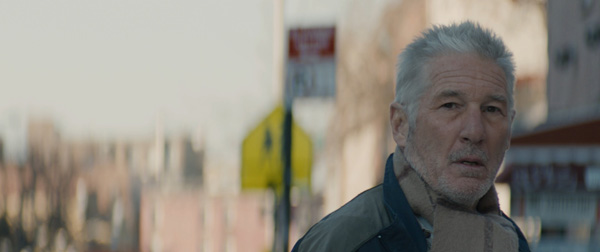
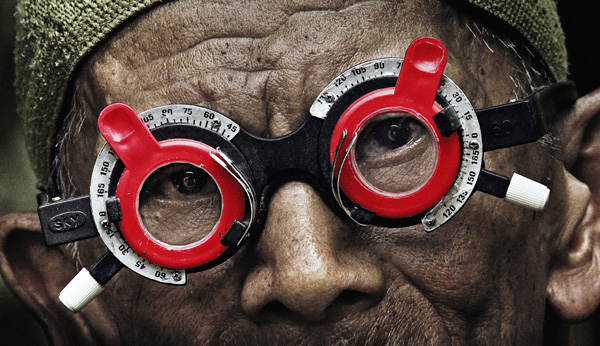
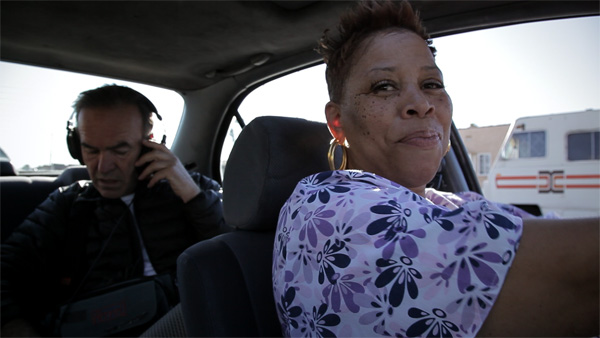
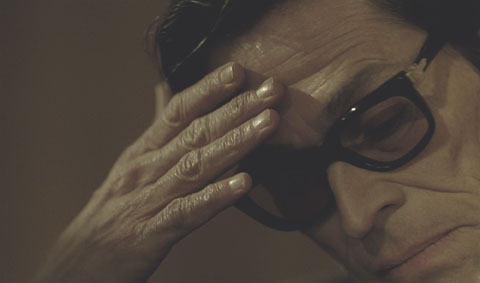
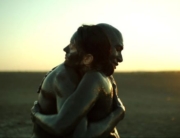




v-e-r-y slow, he just walks around. Plot goes nowhere. Nothing happens and nothing resolved…..pathetic